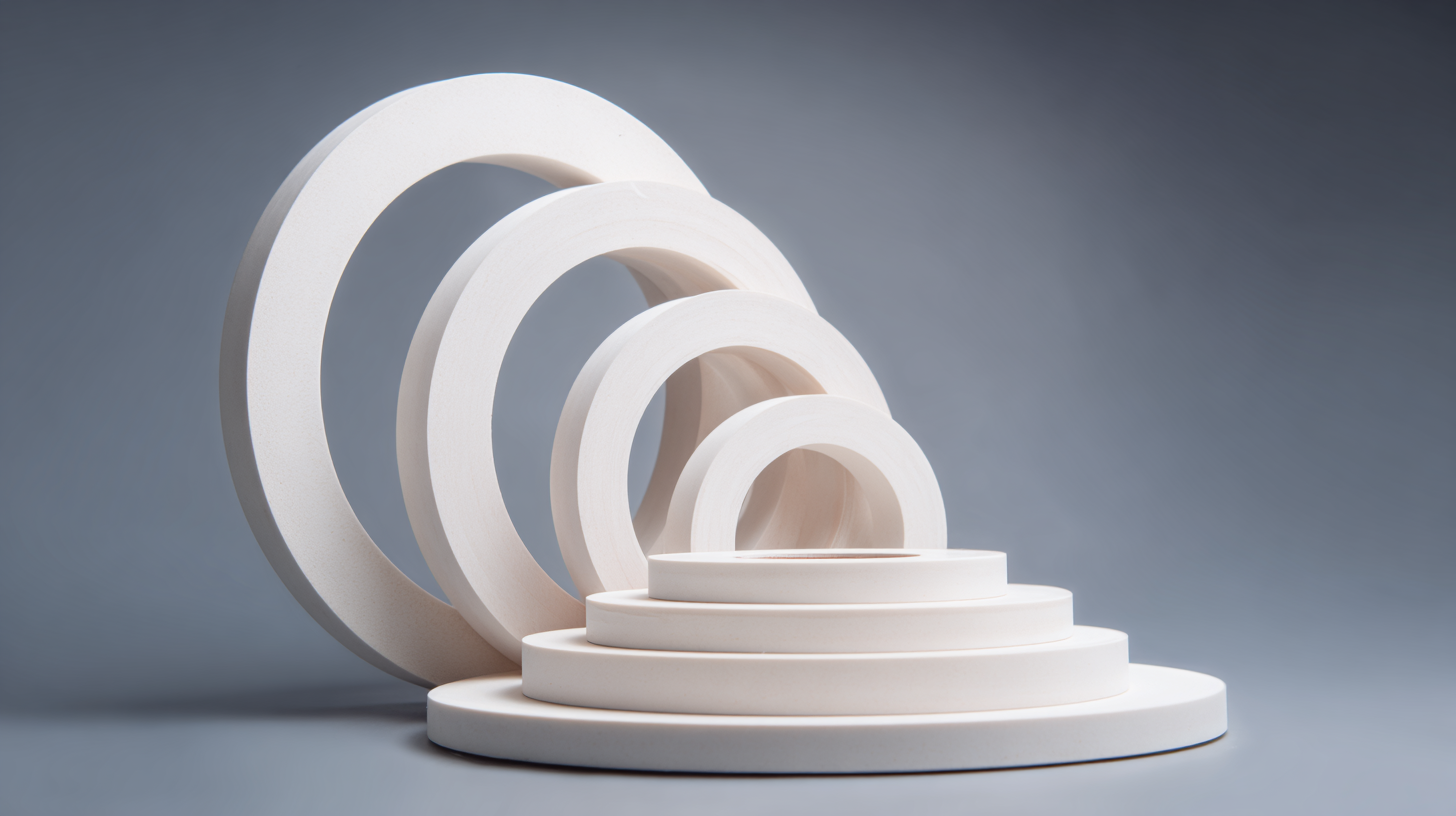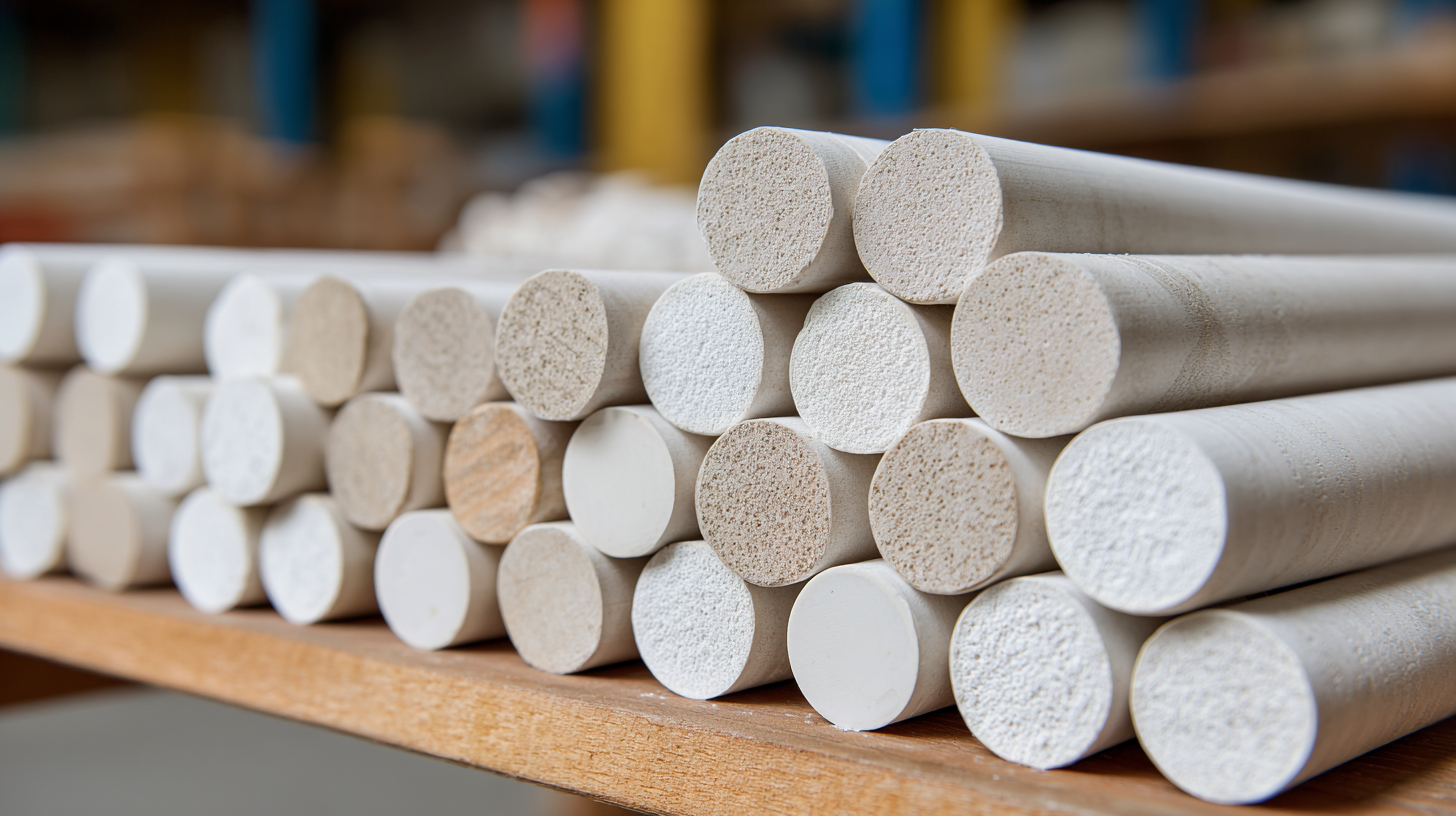Leave Your Message
In today's rapidly evolving industrial landscape, material selection has become more critical than ever, particularly in sectors such as aerospace, electronics, and medical devices. As highlighted in a recent report by Research and Markets, the global ceramic materials market is projected to reach $1.5 billion by 2025, with Alumina Ceramic leading the charge due to its exceptional properties.

Alumina Ceramic boasts remarkable hardness, temperature resistance, and biocompatibility, making it the material of choice for various applications—from wear-resistant components to advanced electronic insulators. As industries strive for innovation and reliability, understanding the multitude of benefits offered by Alumina Ceramic is essential for staying competitive.
This blog will explore 15 compelling reasons why Alumina Ceramic is the ultimate choice for your industry, shedding light on its unmatched performance and future potential.
 Alumina ceramic is rapidly gaining traction across various industries, and the projected demand by 2025 underscores its pivotal role in modern manufacturing and technology. As sectors such as electronics, automotive, and aerospace continue to evolve, the unique properties of alumina ceramics, such as high hardness, excellent thermal stability, and electrical insulation capabilities, position them as essential components. Companies are increasingly recognizing that investing in alumina ceramic materials can enhance product durability and performance, making them indispensable in high-stakes applications where reliability is paramount.
Alumina ceramic is rapidly gaining traction across various industries, and the projected demand by 2025 underscores its pivotal role in modern manufacturing and technology. As sectors such as electronics, automotive, and aerospace continue to evolve, the unique properties of alumina ceramics, such as high hardness, excellent thermal stability, and electrical insulation capabilities, position them as essential components. Companies are increasingly recognizing that investing in alumina ceramic materials can enhance product durability and performance, making them indispensable in high-stakes applications where reliability is paramount.
Moreover, the versatility of alumina ceramics allows for innovative solutions in demand-driven markets. For instance, the rise of electric vehicles and renewable energy technologies has stimulated the need for materials that can withstand extreme conditions while maintaining efficiency. This trend is further amplified by advancements in manufacturing techniques, allowing for more intricate designs and applications. As industries adapt to these challenges, the utilization of alumina ceramics is set to expand, positioning them as a cornerstone for sustainable development and progress in key sectors by 2025.
The alumina ceramic market is poised for significant growth, with industry revenue projections indicating a potential reach of $XX billion by 2027. According to a recent report by MarketsandMarkets, the global alumina ceramics market is expected to grow at a compound annual growth rate (CAGR) of 6.5% from 2022 to 2027. This increasing demand can be attributed to the material's unique properties, including high wear resistance, thermal stability, and electrical insulation, making it an ideal choice for various applications in industries such as electronics, automotive, and aerospace.
Moreover, the surge in demand for advanced materials in the manufacturing sector is driving innovations in alumina ceramics. Research by Grand View Research indicates that the electrical and electronics segment will dominate the market, particularly due to the rise of high-performance components used in electric vehicles and advanced electronic devices. As manufacturers continue to seek reliable and robust solutions for complex applications, the alumina ceramic industry's revenue is set to soar, reflecting its pivotal role in shaping the future of multiple high-tech industries.

Alumina ceramics are making significant strides in various industries due to their exceptional properties, such as high strength, wear resistance, and thermal stability. In 2025, the aerospace sector is set to be one of the top beneficiaries of alumina ceramic innovations. As reported by the Aerospace Materials Market Analysis, the use of alumina ceramics in engine components and structural applications can reduce weight by 20% while withstanding extreme temperatures. This not only enhances fuel efficiency but also improves overall performance in high-stress environments.
The medical devices industry is also witnessing a transformative impact from alumina ceramics. According to a recent report by Research and Markets, the global market for alumina-based medical implants is projected to grow by 10% annually, driven by the material’s biocompatibility and resistance to wear. These properties make alumina ceramics ideal for orthopedic implants such as hip and knee replacements, ensuring longevity and reduced complications for patients.
Lastly, the electronics industry is rapidly adopting alumina ceramics in the production of insulators and substrates, with the market expected to reach $5 billion by 2025. The increasing demand for miniaturized and high-power electronics drives this growth, highlighting alumina ceramics' ability to withstand high temperatures and insulating properties, making them essential for the next generation of electronic devices.
Alumina ceramics are increasingly recognized for their superior properties, making them an ultimate choice for various industrial applications. Their remarkable mechanical strength, high-temperature resistance, and excellent wear properties position them as essential materials in today's competitive manufacturing landscape. Recent market analyses indicate that the global technical ceramics market is projected to grow significantly, illustrating the rising demand for advanced materials like alumina ceramics. Innovations in fabrication methods, such as powder metallurgy for high-purity alumina ceramics, are enhancing their performance across different sectors.
Furthermore, research exploring the effects of additives like TiO2 and MoO3 on the sinterability and mechanical properties of zirconia toughened alumina shows potential for optimizing their manufacturing processes. The application of advanced techniques such as 3D printing with vat photopolymerization is also paving the way for new possibilities in creating high-performing alumina ceramics. These developments not only enhance the physical and mechanical properties of ceramics but also broaden their use cases in industries ranging from aerospace to automotive, demonstrating their versatility and importance in modern engineering solutions.
| Property | Description | Industry Application |
|---|---|---|
| High Hardness | Alumina ceramics have superior hardness, making them resistant to wear and abrasion. | Manufacturing, Mining |
| High Melting Point | With a melting point exceeding 2000°C, alumina ceramics withstand extreme heat. | Aerospace, Metal Processing |
| Corrosion Resistance | Resistant to a wide range of corrosive chemicals and environments. | Chemical Processing, Oil & Gas |
| Electrical Insulation | Excellent electrical insulator, suitable for electrical applications. | Electronics, Power Generation |
| Biocompatibility | Non-toxic and biocompatible, making it safe for medical applications. | Healthcare, Dentistry |
| Low Thermal Conductivity | Great insulator against thermal conductivity. | Heat Shields, Kilns |
| Customizability | Can be manufactured in various shapes and sizes tailored to specific applications. | Automotive, Robotics |
| Durability | Incredibly durable, maintaining properties even under heavy stress. | Construction, Heavy Machinery |
| Lightweight | Offers a lightweight alternative to metals while providing comparable strength. | Aerospace, Automotive |
| Cost-Effectiveness | Lower maintenance and replacement costs due to longevity. | Manufacturing, Industrial Equipment |
| Vibration Damping | Effective at dampening vibrations, enhancing system stability. | Machinery, Automotive |
| Aesthetic Versatility | Available in various colors and finishes suitable for consumer products. | Consumer Electronics, Jewelry |
| Thermal Shock Resistance | Able to withstand rapid changes in temperature without cracking. | Heat Exchangers, Industrial Furnaces |
| Easy to Fabricate | Can be easily machined or shaped to specific designs. | Manufacturing, Custom Parts |
Alumina ceramics have emerged as a cost-effective solution for various industries, allowing organizations to significantly reduce long-term operational costs while maintaining high performance standards. According to the Technical Ceramics Market Size report, the global market is projected to grow from USD 105.54 billion in 2025 to USD 162.22 billion by 2033, indicating a robust demand for advanced materials like alumina that provide durability and energy efficiency. The inherent properties of alumina ceramics, including high thermal resistance and excellent wear properties, make them ideal for applications in sectors ranging from aerospace to automotive.
Furthermore, the cost-effectiveness of alumina ceramics is reinforced by additive manufacturing techniques that optimize material usage and minimize waste. In the aerospace industry, for instance, recent trends show that additive manufacturing not only reduces production costs but also contributes to sustainable development goals by lowering the environmental footprint of parts fabrication. With an increasing emphasis on sustainability and operational efficiency, businesses utilizing alumina ceramics can expect enhanced competitiveness, as these materials deliver significant savings in maintenance and replacement costs over their lifecycle.
